Table of contents
Nutmeg (raw, organic?) - the seeds of the nutmeg tree ( Myristica fragrans ) - is usually used grated or ground . Its musky scent enhances many dishes.
Use in the kitchen:
What does nutmeg taste like? Raw nutmeg has a very spicy aroma and tastes a little bitter. What does nutmeg smell like? The scent of the seed is sweet to slightly peppery, some say woody to slightly resinous.
Freshly grated, raw nutmeg has the best flavor, which is why it is always added to the dish at the end of cooking or just before serving. Stainless steel graters or nutmeg graters are ideal for grating the hard spice nut. Nutmeg mills also do a good job. Ground nutmeg from the supermarket has a less intense flavor because the essential oil evaporates quickly after grinding.
Nutmeg is a good spice for potato dishes such as potato gratin or mashed potatoes. Thicker or thick soups such as pumpkin or zucchini cream soups as well as heartier vegetable soups or stews are often seasoned with a touch of nutmeg. The spice also goes well with vegetables such as spinach , all types of cabbage, peas , carrots and parsnips . Use the spice sparingly, see "Danger - Intolerances - Side Effects".
The musky nut is used in both savoury and sweet baked goods (or Christmas biscuits). A small pinch of nutmeg rounds off the flavour wonderfully, particularly in Christmas hot drinks such as mulled wine or punch, as well as in biscuits and gingerbread. The well-known Indian spice mixture Tandoori also contains nutmeg. Spices such as cinnamon , bay leaf , rosemary and cloves go very well with nutmeg.
The food industry often uses essential nutmeg oil because it is cheaper. This flavoring can be dosed better because it always has the same flavoring power. The oil is suitable for baked goods, syrups, drinks and sweets. There is no risk of aflatoxin contamination when using the oil. You can find out more under the heading "Danger - Intolerances - Side Effects".
The yellow-orange, round fruit of the nutmeg tree looks similar to an apricot. It is processed locally into jams, jellies, pickles or syrup. 1 The mace flower (mace flower or mace ) is also well known; it is the bright red or orange-red coating of the kernel. After drying, the mace flower appears yellow and is usually sold ground. Mace has a much milder taste. 2
Recipe for vegan carrot and nutmeg soup:
Ingredients: 750 g carrots , 2 shallots , 1 piece of ginger (1 cm), 2 cloves of garlic , 2 tbsp rapeseed oil , 500 ml vegetable stock , 400 ml coconut milk , lime juice from half a lime, nutmeg, chili .
Preparation: Chop or mince peeled carrots, onions, ginger and garlic and briefly sauté in oil. Pour over the stock and simmer for about 20 minutes. Then puree everything finely and mix in the coconut milk. Season the soup with freshly grated nutmeg, lime juice and chili.
| Not only vegans or vegetarians should read this: Vegans often eat unhealthily. Avoidable nutritional mistakes . |
Shopping - where to buy?
You can find ground or whole nutmeg all year round at major retailers such as Coop , Migros , Denner , Volg , Spar , Aldi , Lidl , Rewe , Edeka , Hofer etc. Nutmeg is often packaged in small spice jars, tins or sealed aroma bags.
The name "nutmeg seasoning" or "nutmeg seasoning" can be confusing for consumers. It can be ground nutmeg or a special spice mixture. There is also a composition of ground nutmeg, wheat bran, nutmeg oil, vegetable oil and sometimes even dry glucose syrup or the coloring paprika extract. Prefer products with 100% nutmeg, if possible from organic farming. Special spice shops or retailers also offer good quality nutmeg. Organic?
High-quality, untreated whole nutmegs are actually dark. Due to their high oil content, a light coating with dark spots can form, but this indicates that they are natural. Conventional nutmegs are treated with lime milk to protect them from insect damage, which is why they look whitish. Residues of insecticides and fumigants cannot be ruled out. 2
The risk of whole nutmegs being contaminated with mycotoxins is very low due to strict import regulations. Contamination of ground products, on the other hand, is a frequent occurrence.
How much does a nutmeg weigh? Grade A nutmegs are the highest quality and weigh around 8 g each. The lowest grade is grade E, which weighs less than 3 g.
Storage:
Nutmegs, whole or ground, should always be stored in a dark, cool and, above all, dry place. The ground spice is less recommended as the aroma evaporates quickly. If you do have the spice in ground form at home, store it away from air, light and moisture. We recommend buying whole, high-quality nutmegs, which you can grate fresh into the dish with a nutmeg grater or nutmeg mill when needed. Another fine grater will also do.
Found in the wild:
Originating from the Moluccas, the nutmeg tree now grows wild in almost all tropical regions. 3
Ingredients - nutritional value - calories:
Nutmegs contain around 36% fat, of which around 10-15% is essential oil. The approximately 50% carbohydrates are made up of starch, sucrose, xylan and pentosans. The protein content is rather low at 6%. Due to the high fat content, the energy content is very high at 525 kcal/100g.
It is important to note that only a very small amount of nutmeg should be used. In addition to the nutrients mentioned here, of which only small traces are consumed, nutmeg also contains around 10% phenylpropane derivatives, such as myristicin, safrole, eugenol and elemicin. Myristicin and safrole have a hallucinogenic effect in addition to their carcinogenic properties. The latter also applies to elemicin. Eugenol is said to have analgesic and anti-inflammatory effects, but also toxic effects on cells and genes.
Nutmegs have 183 mg of magnesium per 100 g. This essential mineral is very important for metabolic reactions and for bone growth. Seeds, nuts, pulses and whole grains contain a lot of it: real oats have 177 mg of magnesium, a similar proportion to nutmeg. Wheat bran contains a particularly high amount of this element, at 611 mg/100g. 4
Nutmeg contains a considerable amount of manganese, at 2.9 mg/100g. Allspice contains just as much. Unpeeled hemp seeds have a high level of this trace element, at 7.6 mg, but cloves are almost unbeatable, at 60 mg/100g. Manganese is important for the formation of cartilage and connective tissue, among other things. 4
100 g of nutmeg contains 76 µg of folate . Folate is the naturally occurring precursor of folic acid. This water-soluble vitamin is very important for cell renewal. Pulses contain a lot of it, e.g. peanuts : 240 µg. 4
Nutmegs also contain traces of thiamine , phosphorus , calcium , iron , zinc and potassium . 4
Health aspects - effects:
When taken internally, nutmeg helps against diarrhea, flatulence, vomiting or colic. When taken externally, nutmeg has an analgesic effect on toothache. 5
Why is nutmeg so healthy? In small doses, nutmeg is said to have a warming, stimulating and activating effect. The essential oil it contains is said to be responsible for this. It stimulates blood circulation and has a pain-relieving effect. Nutmeg is also said to have antibacterial, heart-strengthening and antispasmodic properties. 6
Dangers - intolerances - side effects:
The risk of contamination with mycotoxins, especially aflatoxins, is particularly high with nutmegs due to the high moisture content in tropical climates. Peanuts, hazelnuts, almonds and pistachios also provide a suitable food source for molds such as Aspergillus parasiticus and A. flavus . Mycotoxins are barely visible; infected foods light up under UV light, they fluoresce. Not only oral ingestion, but also inhalation and skin contact can cause poisoning. 2
The aflatoxin limit for nutmeg in adults is 5.0 μg/kg. For infant formula, the maximum aflatoxin content is even more strictly regulated at 0.1 μg/kg. 7
Aflatoxins have a very strong carcinogenic effect when ingested repeatedly, 8 destroying germ cells and promoting the formation of hematomas. 2 Animal experiments on rats showed that only 10 μg/kg body weight causes cancer (especially liver cancer). In adults, the lethal oral dose of aflatoxin B 1 is 1-10 mg/kg body weight.
So-called BWP nuts (broken, wormy, punky), i.e. those of dubious quality, are not permitted for sale as spices. These inferior nuts can still be processed into nutmeg oil. They can be purchased at a much cheaper price and there is no risk of aflatoxins after processing. 9
The myristicin contained in nutmeg is poisonous to humans. 4 g of nutmeg or more can cause severe poisoning in adults. 10 For small children, this amount can be life-threatening. However, nutmeg does not taste good in this dose. If you take too much once, be careful not to do it a second time. 3 An overdose can cause severe headaches, nausea or dizziness. 5
Some people describe states of intoxication when taking 5 mg or more. Myristicin acts as a monoamine oxidase inhibitor (MAO inhibitor) and is said to have a hallucinogenic effect similar to that of ecstasy. The long-lasting nausea and the associated liver damage prevent people from abusing it.
Use as a medicinal plant:
The essential oil of nutmeg is found as an ingredient in some tonics and stomach remedies. Externally, it helps with colds and rheumatic diseases, similar to camphor and eucalyptus oil. 3
Folk medicine - naturopathy:
In the early Middle Ages, the psychoactive, hallucinogenic properties of nutmeg were used. In folk medicine, nutmeg is said to have a stimulating and aphrodisiac effect. 10
In the past, nutmeg was abused as an abortifacient. 3,12 In England, nutmeg was ground up and served with beer. 13
Occurrence - Origin:
The nutmeg tree originally comes from an Indonesian island group, the Moluccas, more precisely from the islands of Banda and Amboina. Nutmeg reached the West via the Arabs around 600 AD. The spice was used in China and India long before the Christian era. There were historic battles between the Dutch, French and English for the monopoly on the trade in nutmeg. 10
Today, the nutmeg tree Myristica fragrans is cultivated in many tropical areas. 3,13 Before Hurricane Ivan in 2004, the island of Grenada (Caribbean) was one of the main export areas for nutmeg. However, the plantations have not recovered since then. Indonesia is still one of the main growing countries for nutmeg trees.
According to Wikipedia , the annual production of nutmeg is 10,000 to 12,000 tons.
Cultivation - Harvest:
The nutmeg tree needs a tropical climate, heavy rainfall and preferably rich, volcanic soil for healthy growth. 13
Nutmeg trees are dioecious, meaning that the sexes are usually found on different trees, which are difficult to tell apart in the juvenile stage. One male tree is enough to fertilize around 10 female trees. 10 Plants with both sexes on one tree also occur. The leaves are leathery and usually dark green, the flowers are pale yellow with a pleasant scent.
The trees reach a height of 10-20 m. After the 8th year, the female trees bear fruit for around 20-30 years, which with their yellow-orange color is reminiscent of apricots or peaches. While still hanging on the tree, the fruit flesh bursts open (opening fruit) and the bright red seed coat or aril (mace) of the nutmeg appears. The main harvest time is April to November. 13 After the harvest, the fruit flesh and seed coat are removed. To prevent the formation of mold, the drying process is accelerated by gently drying the seeds in the sun, over a fire or in drying houses. The seed coat is then cracked open and the seeds contained therein are sold as the nutmeg we know. 3
Myristica fragrans is very susceptible to tropical fungal diseases and pests. It is suspected that the strict isolation on the Banda Islands during the colonial period is one reason for this poor resistance. Cross-breeding with wild species was hardly permitted. 10
Risk of confusion:
Myristica fragrans can easily be confused with other species of this genus: M. argentea (horse nutmeg, Makassar nuts, Papuan nuts etc. - from Indonesia - from New Guinea), M. malabarica (Malabar nuts, Bombay mace - from India), M. speciosa (Batjang nutmeg, Pala maba, Onem, Tidore, Gosara onin - from the Moluccas), M. fatua . 13
Here is a list of some fruits that are called nutmeg but do not contain myristicin. They are often used as substitutes or adulterants: Brazilian nutmeg ( Cryptocarya moschata ), Chilean nutmeg ( Laurelia sempervirens ), Mace ( Acrodiclidium puchurymajor ), Calabash nutmeg ( Monodora myristica ), Californian nutmeg ( Torreya californica ), etc. 13
General information:
The nutmeg tree ( Myristica fragrans ) belongs to the nutmeg family (Myristicaceae). Botanically speaking, the nutmeg is not a nut, but the seed of a fruit.
The name comes from the Middle Latin nux muscata, which means "musk-scented nut". The English name for nutmeg is nutmeg.
Drug names for nutmeg are: Myristicae semen, Myristicae nux, Nuces aromaticae, Nuces nucistae, Nuclei myristici, Nux moschata, Semen myristicae . 13
Other uses:
Essential nutmeg oil (Myristicae aetheroleum, M. fragrantis aetheroleum), which is produced by steam distillation of low-quality nutmegs, is used in some foods as well as in ointments, toothpaste and perfumes. Essential oils should only be applied diluted due to their skin-irritating properties.
The essential oil of the green leaves of the nutmeg tree is often used to dilute or adulterate real nutmeg oil. 13
Nutmeg butter or fat is a by-product of nutmeg oil production. It is obtained by pressing nutmegs. This fatty oil (Myristicae oleum) has an orange-red color and a buttery consistency. 14 On the one hand, it can be used as a substitute for cocoa butter, but nutmeg butter is also used in candles, scented lamps, body oils, aftershave, soaps, ointments, toothpaste and perfumes.
Literature - Sources:

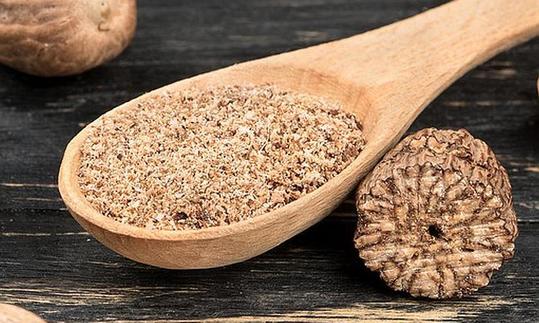

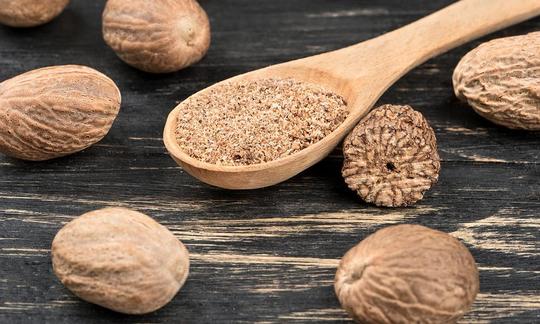

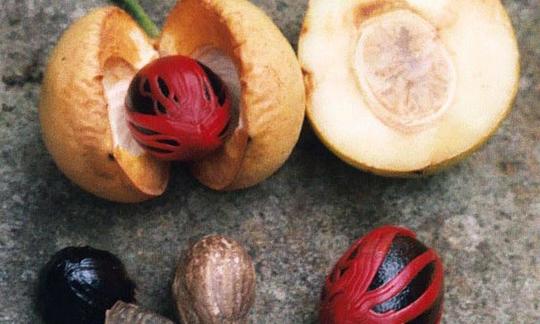

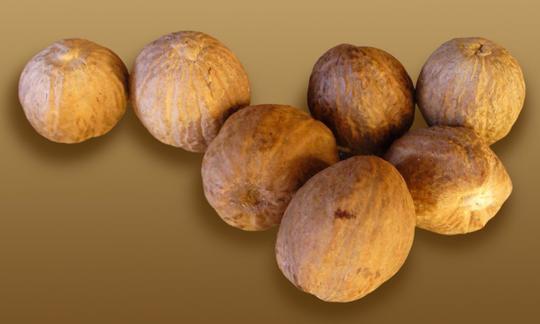

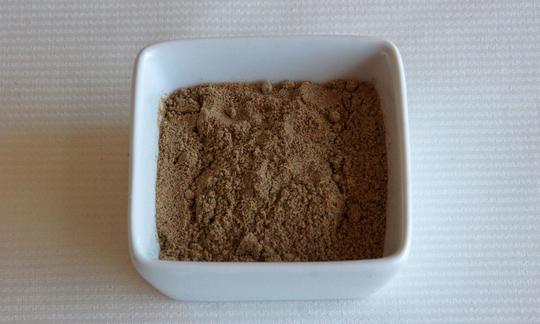

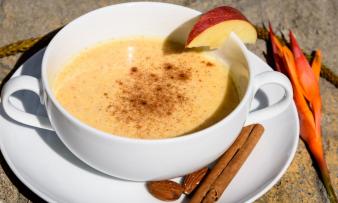
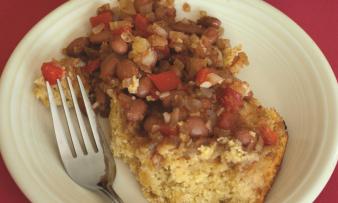
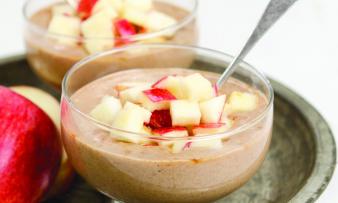


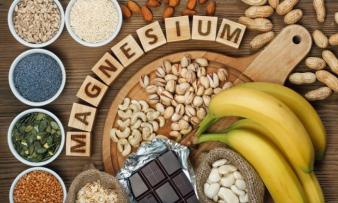


Comments